It’s rare for a player to stop and wonder about the rainbow motley that is video game fashion. Though when a fan asked “‘What’s going on with Kat’s clothes?’”, seen in a recent tweet by Shunsuke Saito, the lead character designer of Gravity Rush, Saito gave an even less common response: he drew out exactly just how Kat puts on her clothes. He even added the description, “The gold frame has a spring-like elasticity, and holds down and fixates the black cloth. If [Kat] moves around too intensely… it may slip off.” Apart from the fact that this miniature step-drawing is an adorable dollop of entertainment in itself, it brings to our attention something often neglected when talking about video games: fashion, and the role it plays in video games. Fashion has a criminally unsung role in video games, and has evolved over the years to a breaking point where games are now influencing fashion.

Video game fashion has always relied on the technical capabilities of the computers they ran on. Pre-8-bit titles can’t exactly be judged on their sense of style—the “models” of the 70’s gaming world were paddles (the blocky white lines of Pong) and simple asteroids (of Asteroids—also white). It wasn’t until the medium advanced to the 8-bit era that fashion began to play a role. But even then, artisanship appeared in the face before it ever reached the clothes. With each iteration of the 8-bit and 16-bit Final Fantasy games, for instance, the then-named developer, Square, improved on sophisticated manipulations of character sprites to portray compelling emotions.
They included animations of crying and finger-wagging by sprites 26-pixels tall with four different colours to compose with and six different frames of animation, an achievement in form and restraint. But this restraint made clothing designs reductive. Although lead character designer Yoshitaka Amano’s complex and mystifying conceptual designs came long before Ariana Grande’s black-latex bunny mask graced the series, the technical limitations reduced those designs in the game to what looked like mere indicators of character class. And although beloved character designs like Mario benefit from this reductiveness by improving his recognizability, such is an exercise in iconicism rather than fashion sense. The Nintendo figurehead may be Italian, but he is no Gucci or Ferragamo.
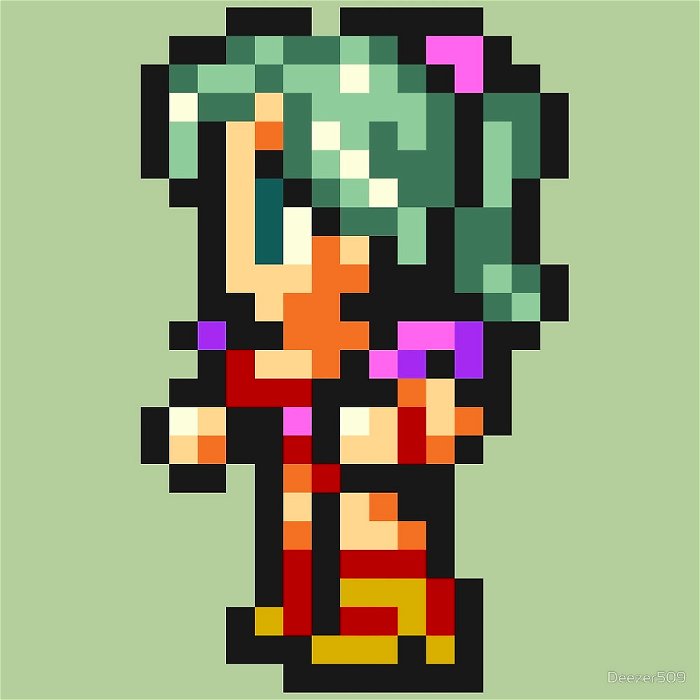
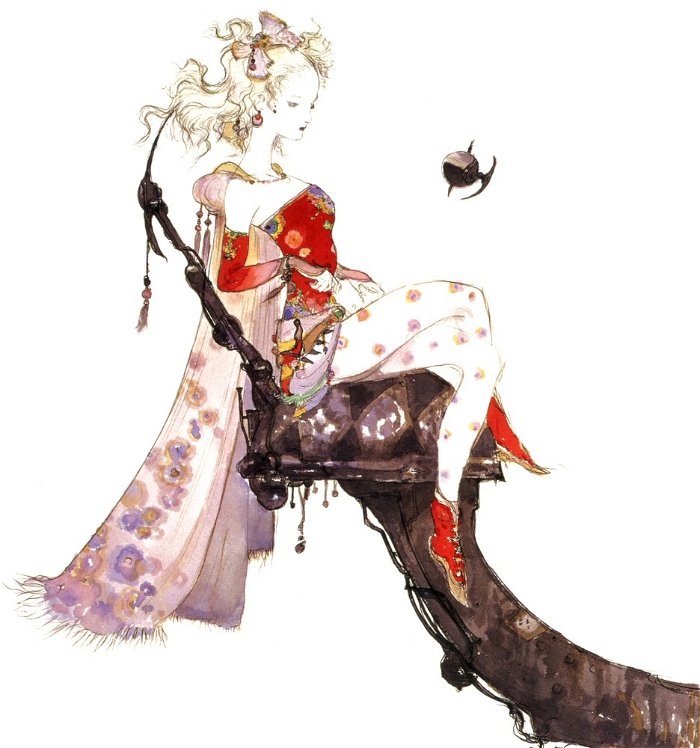
But even reaching a level of photorealism isn’t going to be the cure-all for video game fashion. The new freedom presented to designers by contemporary processing power often runs directly into the big dollar sign of sex appeal and exploitation. And attempts to justify these intentions usually hide ulterior motives, like with the recent Metal Gear Solid 5: The Phantom Pain. One of the lead characters, Quiet, wears a revealing bikini top, which initiated a series of aggressive tweets at Hideo Kojima, lead game designer of the series, when first displayed to the public. “I created her character as an antithesis to the women characters [who] appeared in past fighting games, who are excessively exposed” Kojima tweeted in defence of his choice. “Once you recognize the secret reason for her exposure, you will feel ashamed of your words & deeds” he continues.
It turns out the secret reason is that Quiet uses photosynthesis, absorbing air, water, and nutrients through her skin due to parasites affecting her body, forcing her to expose as much skin as possible. But no matter how creative the explanation, it is nonetheless contradicted by previous tweets in which Kojima explains he ordered Yoji Shinkawa, Metal Gear Solid 5’s art director, to make the character more erotic so she would be more attractive for figurine sales. Kojima writes “The initial target is to make u want to do cosplay or its figurine to sell well.” On the other hand, perhaps this is simply just a case of the anime law of physics in action, according to which, as everybody knows, the smaller the piece of armor, the more defence it has; where a T-back is equal to an M1 tank.
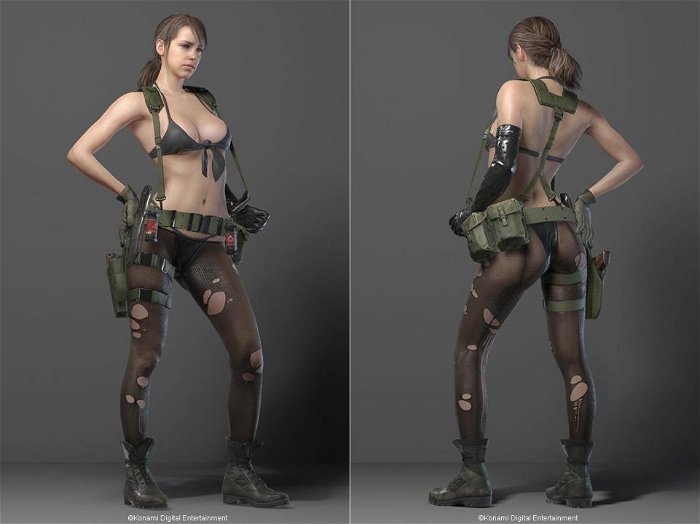
At some point, the question arises of whether or not designers of video games are even meant to be trendsetters in fashion. They are illustrators—character designers, not fashion designers, after all. But Charles Dana Gibson was an illustrator for a series of adventure novels as well before he drew the famous series of the Gibson Girl, who became the model for the independent and capable woman. Often depicted as being an active character rather than a passive model, the Gibson Girl was seen playing sports, reading, or gardening. She wore more functional, toned down clothing, and in so doing changed fashion forever. The illustrations had a wide and long lasting effect on fashion despite there being no fashion designer at the helm. One yearns for the day where video games can have this level of influence. Perhaps they can’t, because game characters exist in worlds too far displaced from reality; underground sewers riddled with plant creatures and so forth.

Maybe not: Splatoon, Nintendo’s most recent tentpole IP, seems to create a microcosm of what the Gibson Girl did, or say, James Dean’s affect on the rebellious youth of the 50’s. One stroll down Tumblr lane proves that the raucous aesthetic of the game has been culturally infectious, with teens seen taking selfies wearing punk’d out leggings and squid hair under baseball caps—matching sneers to boot. The developers of Splatoon were themselves trying to emulate exactly this attitude; teenagers who have fun and goof around, so to speak. In an interview with Nintendo of Europe, Hisashi Nogami, one of the producers of Splatoon, explains:
The Inklings in the game are basically teenagers. In the game world, the whole act of shooting ink around for fun is like going skateboarding or riding a BMX in our world. It’s a bit dangerous and you do it on the streets, so in that sense it’s inspired by extreme sports. We imagined what kind of fashion these people would like, and that kind of skater fashion seemed appropriate to bring in and integrate with the gameplay. The developers of Splatoon are around 30 years old now, and a lot of the fashion in the game is inspired by the style they grew up with during their teenage years.
But micro-movements like Splatoon have little power to influence the world stage of fashion, as video games are restricted to a subculture. Adrian Wu, one of Toronto’s top fashion designers and who runs their own creative consulting firm, responds to this idea in an email interview, saying “Video games have become a subculture with it’s own norms, ideologies, [and] economic market place. The function of playing and the art and imagery that is designed are two separate things. It’s hard to say but… let’s just say the culture of video games is becoming not just a subculture but possibly becoming the mainstream.”
Wu’s experience in drawing inspiration from other worlds in a show for Margaret Atwood’s sci-fi book, aptly titled In Other Worlds, puts them at a particularly interesting crossroad. Wu is suggesting that once games penetrate mainstream culture, its influence on fashion might grow. “I think video games impact culture in a large way. How it influences the fashion industry that we currently understand might be a little be more complicated,” they wrote when asked about whether or not video games had an impact in modern fashion.
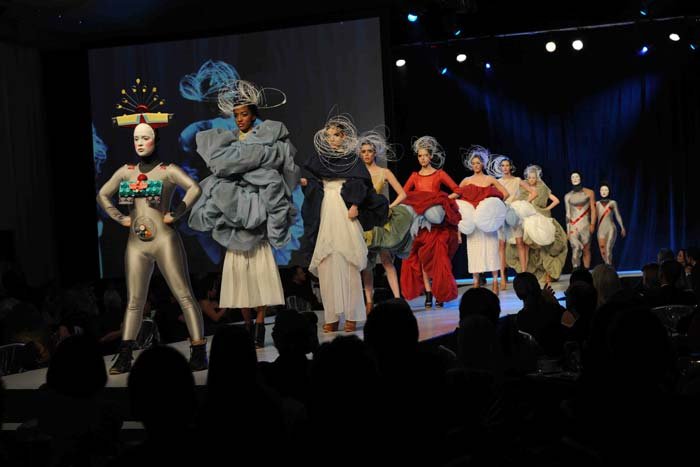
And so comes in the approval of the “elite”: a breakpoint of video games in fashion came when Final Fantasy XIII’s Lightning featured as one of Louis Vuitton’s SS16’s leading models, marking the first time a video game character has led a campaign for a major fashion label. The campaign included Lightning modelling Louis Vuitton’s Series 4 outfits in uncharacteristic poses along with an exclusive interview with The Telegraph. Played completely straight, the video game character answered questions about her new style and what it feels like to be a Louis Vuitton ambassador. She hopes that one day, “we can share the same stage, that different worlds can come together.” Designer Wu echoes the sentiment—for Wu, fashion seems to be an underlying force, and how it presents itself of lesser importance: “We compile symbols in our mind and piece together the reality we would like to participate in. Using our bodies, we physically manifest our theories into practice—practice being a video game or a fashion show. To me there really isn’t that big of a difference, contextually speaking.”
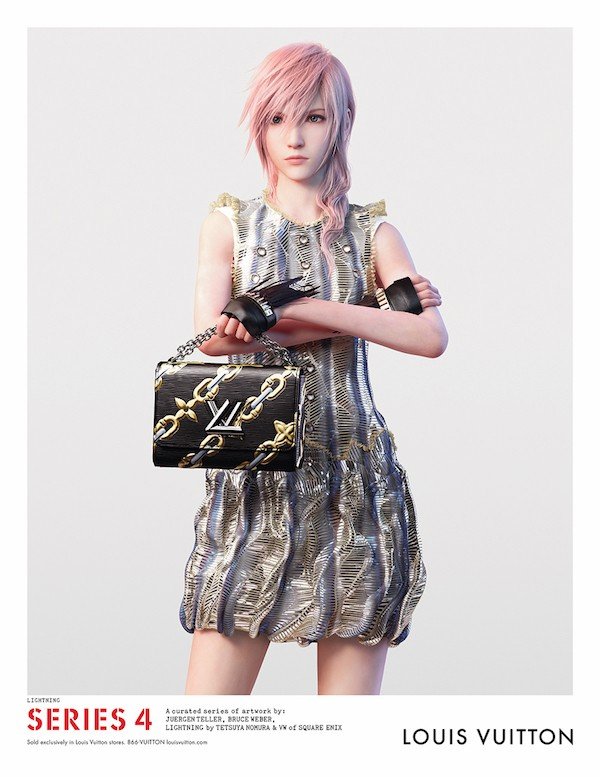
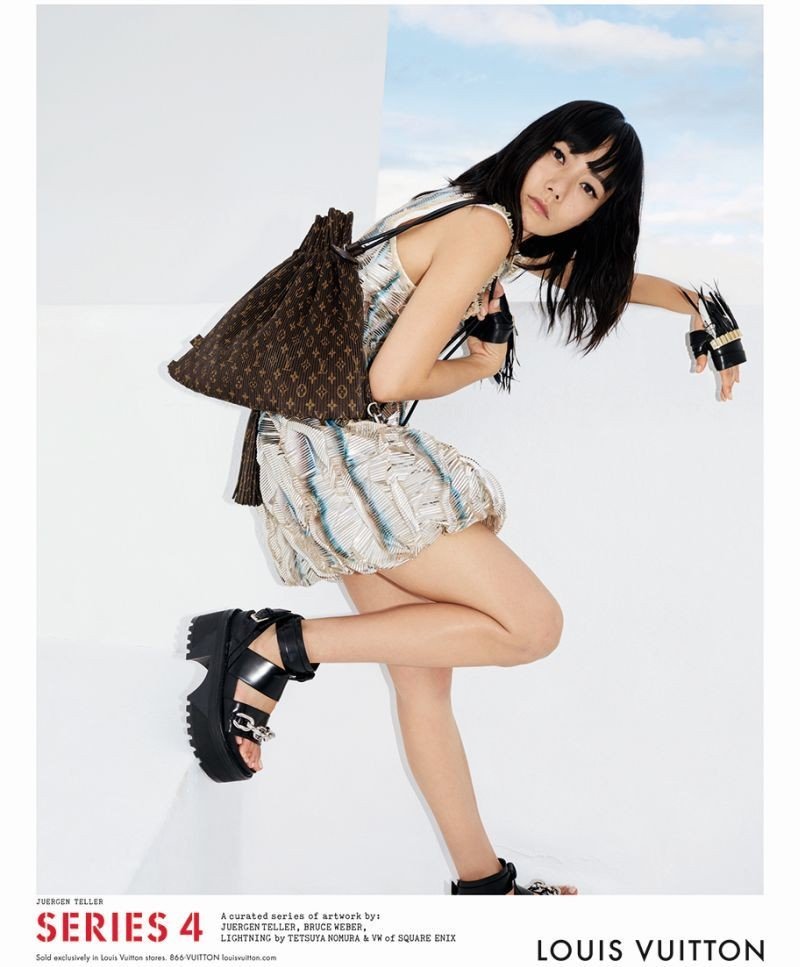
Industry has always led the fashion world, as when the industrial revolution produced the ready-to-wear garment and caused a cosmic fashion shift. And the forefront of industry today is digital technology—on its nose: video games. It is a nascent art form despite boasting bigger-than-Hollywood revenues, and its heyday is yet to come. Perhaps the Charles Dana Gibsons of our industry are sliding down a jungle gym right now, waiting to grow up and change the world. “Eventually they will wake up and realize it’s not just the user experience designers they should be looking for” Wu states about what video game companies should be paying attention to. Chasing the thought, they say “at the moment, the only materials capable of input and output that are portable enough to become a sort of extension of our bodies… [are] smartphones and computers. When those things become malleable, things we can wear more conveniently and functionally than an apple watch, that’s when things will get interesting. Programmable fabric and so forth.”
But before programmable fabrics or after, it is easy to see that the young medium is going to have a great influence on fashion; its roots have already taken hold. VR is being used as digital storefronts and for fashion shows, and as adult films launched VHS into stardom, video games may launch the virtual medium onto the throne of industries across the board. After all, we’re probably all in some virtual simulation from the future anyway, wearing our virtual textiles in our virtual houses to boost our virtual charisma points and win at this game of life. But that’s a rabbit hole for another time.




